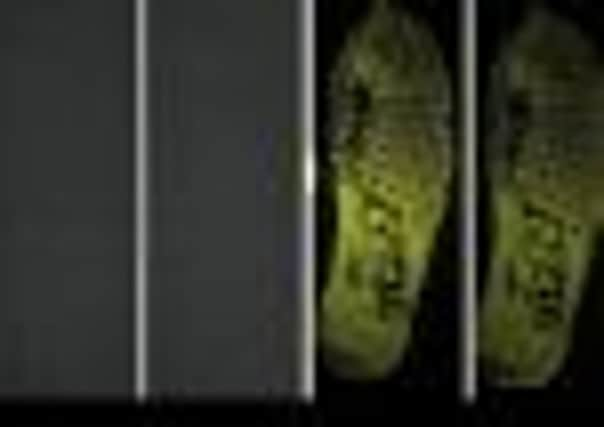Abertay University researchers make potentially major breakthrough in fight against crime


• Previous attempts to recover marks left at crime scenes had often been destroyed by attempts to enhance them
• Footprints can be traced in blood, mud, urine and dust, or on fabrics. The new technique captures latent impressions and will help identify perpetrators in instances where DNA or fingerpritns can be recovered
Advertisement
Hide AdAdvertisement
Hide AdThe scientists, at Abertay University in Dundee, have invented a method that captures the latent impressions left on fabric by the sole of a person’s shoe.


It is the latest breakthrough by the crime-busting scientists at Abertay, who last year became the first to develop a way to recover fingerprints from fabric.
The research team is led by Dr Kevin Farrugia, a teaching fellow at the university’s biotechnology and forensic sciences division.
He said the new techniques would help police to identify perpetrators of serious crimes in cases where, for example, no fingerprints or DNA can be recovered from the scene.
Dr Farrugia explained that previous attempts to recover marks left at crime scenes which could not be seen by the naked eye, by enhancing them with chemicals and light, had often destroyed or obliterated the potential prints because the right mix of chemicals had never been formulated.


But Dr Farrugia has developed the world’s first clear and highly detailed images of latent footwear marks left on fabrics. Lights set at specific wavelengths, filtered goggles and colourings are used to enhance the “invisible” footprints.
The technique, he said, worked on both fresh and old prints and could potentially be used to help solve cold cases as well as new and current crimes.
Dr Farrugia said: “Footwear marks can be made in many contaminants: for instance, blood, mud, urine and dust. They can be left on all sorts of different fabrics, like cotton or denim, as well as on patterned and dark material, which makes them more difficult to see.
Advertisement
Hide AdAdvertisement
Hide Ad“They might be left on the body of a murder victim if the perpetrator kicked or stamped on them during an attack, or they might be made by traces of blood that the perpetrator picked up on their shoes and left on the carpet, or other types of flooring, before leaving the victim’s house.
“When someone steps in wet blood, though, the first few prints they leave will be a wet smudge, so no fine detail from the footwear sole can be recovered.
“However, as the marks fade and becomes less visible, the pattern on the sole of the shoe, by contrast, becomes much clearer and better defined.
“And it’s these prints – the ones that we can’t actually see – that are the most useful at a crime scene, especially when it isn’t possible to recover other types of evidence such as fingerprints and DNA.”